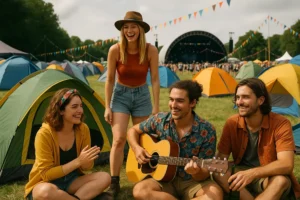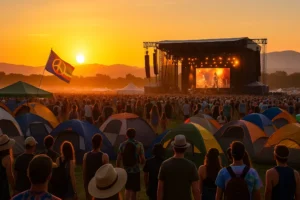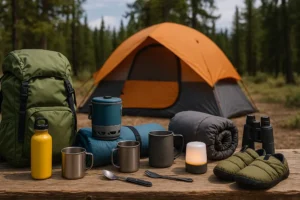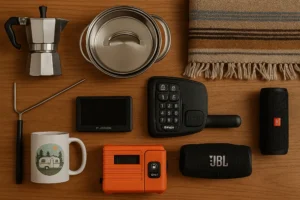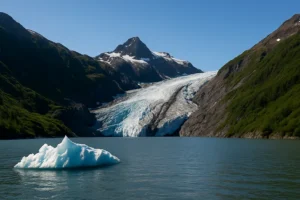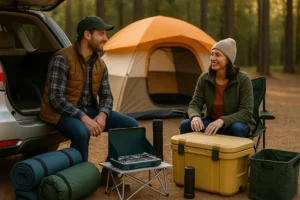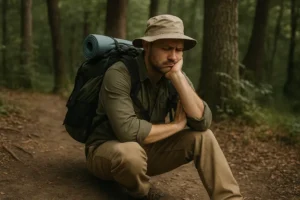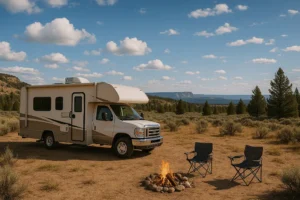If there’s one place that sits on nearly every hiker’s bucket list, it’s Patagonia. The very mention of hiking in Patagonia conjures images of jagged granite peaks, colossal glaciers, turquoise lakes, and winds so fierce they could knock you sideways. Straddling the southern stretches of Chile and Argentina, this rugged region is an adventurer’s paradise—untamed, breathtaking, and humbling all at once. Whether you’re planning a day hike to iconic viewpoints like Fitz Roy or gearing up for a multi-day trek across Torres del Paine, hiking in Patagonia is nothing short of transformative.
The Best Time for Hiking in Patagonia
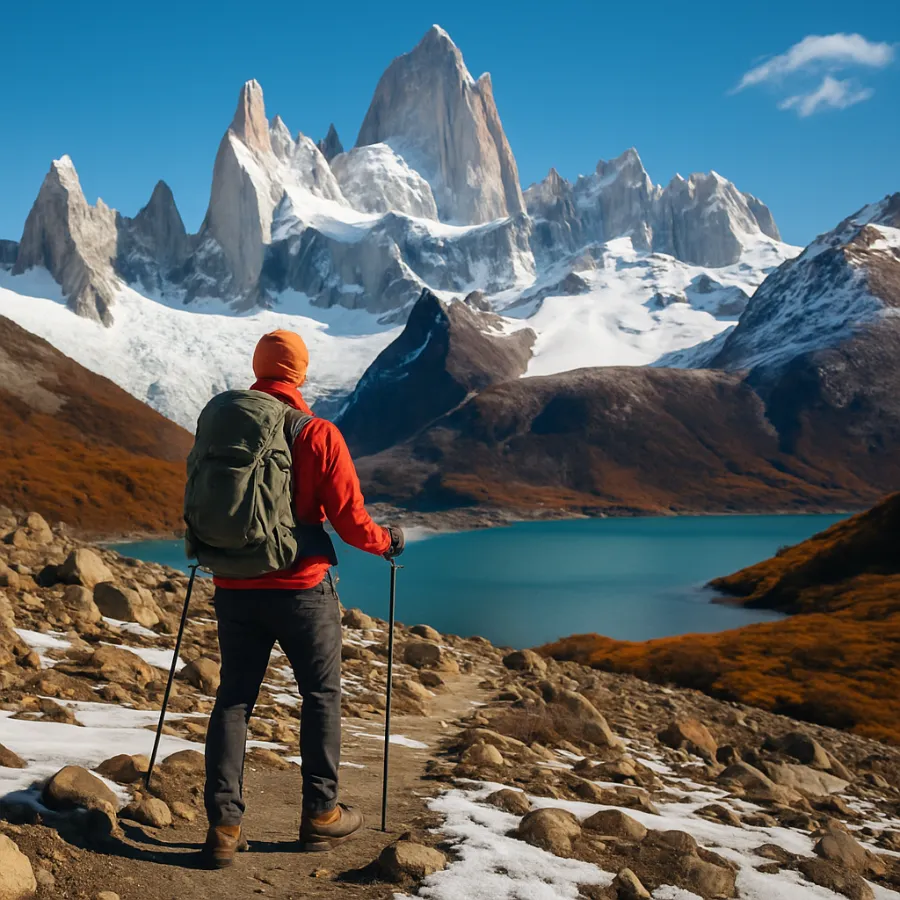
One of the first questions travelers ask is, “When should I go?” The truth is, Patagonia is stunning year-round, but each season offers a different hiking experience.
- Summer (December–February): Long days, warmer temperatures, and the best conditions for multi-day treks. Also the busiest season—book campsites and refugios months in advance.
- Spring (September–November): Fewer crowds and blooming wildflowers, but trails may still be muddy or snow-covered.
- Fall (March–May): Fiery autumn colors and fewer tourists, though weather can turn unpredictable.
- Winter (June–August): Many trails close due to snow, but it’s still possible to explore areas like El Chaltén and even ski in Bariloche.
Pro tip: Patagonia is notorious for giving you four seasons in a single day, so no matter when you visit, pack for sun, rain, wind, and even snow.
Essential Tips for Hiking in Patagonia
Hiking in Patagonia isn’t like strolling a well-manicured park. This is raw wilderness, and preparation makes all the difference.
- Pack for the wind: Gusts can be brutal—secure your gear, especially rain covers.
- Layer up: A moisture-wicking base layer, insulating mid-layer, and waterproof outer shell are non-negotiable.
- Carry cash: Some park entrances and refugios don’t take cards.
- Book early: Torres del Paine’s W and O treks require advance reservations for campsites and huts.
- Water: Streams and rivers fed by glaciers are safe to drink, but always use judgment near campsites.
Top Regions for Hiking in Patagonia
El Chaltén, Argentina – The Hiking Capital
This tiny village is often called the hiking capital of Argentina, and for good reason. Trails start right at the edge of town, leading to world-famous viewpoints. Laguna de Los Tres offers front-row views of Mount Fitz Roy, while Laguna Torre brings you face to face with the mighty Cerro Torre. For something shorter, the Condor Mirador hike is a quick but rewarding option.
El Calafate, Argentina – Gateway to Glaciers
Known primarily as the access point to the Perito Moreno Glacier, El Calafate also offers shorter hikes. Walking the metal walkways around Perito Moreno allows you to witness massive chunks of ice crashing into Lago Argentino—a thunderous, unforgettable experience. Guided glacier treks are available for the adventurous.
Torres del Paine, Chile – Patagonia’s Crown Jewel
Few places on Earth rival the drama of Torres del Paine National Park. With granite towers piercing the sky, turquoise lakes, and sprawling glaciers, it’s a landscape tailor-made for trekkers. From the iconic Las Torres hike to the legendary W and O circuits, this park offers trails for every level of ambition.
The Lake District & Beyond
Further north, Chile’s Lake District showcases volcanoes like Villarrica and Osorno. Argentina’s Bariloche boasts the Siete Lagos (Seven Lakes) route. For those seeking less-crowded trails, the Cerro Castillo trek is a gem worth adding to your list.
Famous Day Hikes in Patagonia
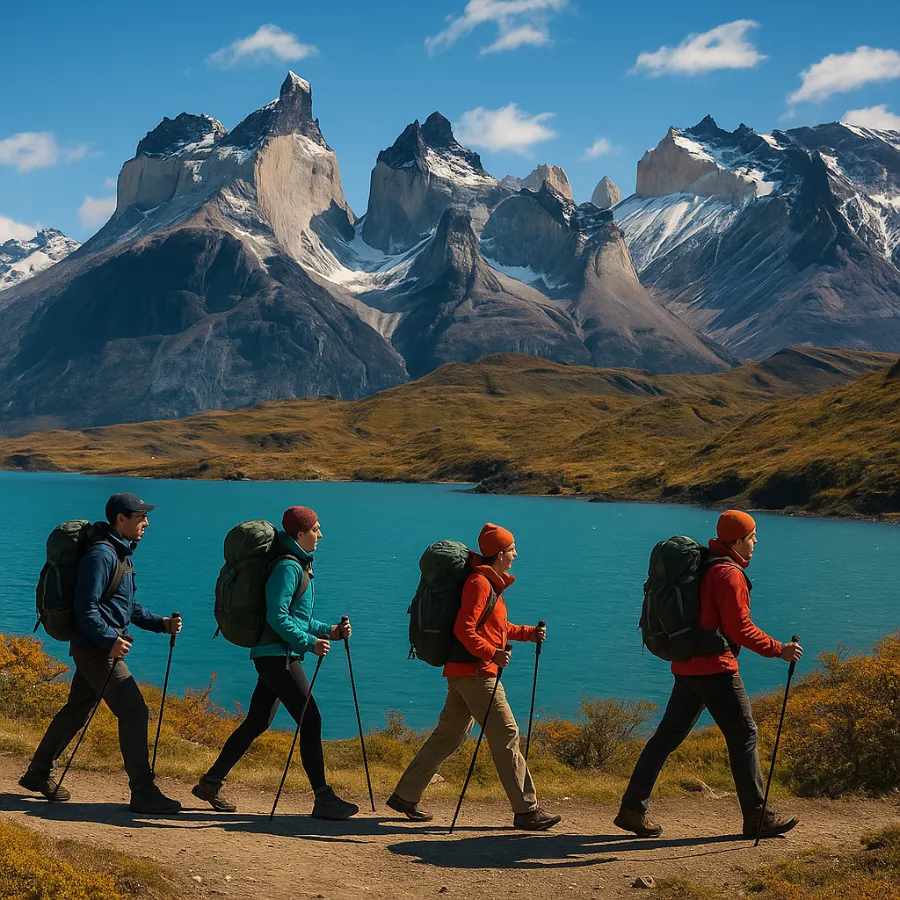
If you’re short on time or just want to sleep in a cozy bed at night, Patagonia’s day hikes pack plenty of punch.
- Laguna de Los Tres (El Chaltén): A 21 km round trip with a grueling final climb, but the payoff—Fitz Roy glowing at sunrise—is worth every step.
- Laguna Torre (El Chaltén): Slightly easier than Los Tres, this 18 km hike leads to views of Cerro Torre and a glacier-fed lagoon.
- Perito Moreno Glacier (El Calafate): Short boardwalks and optional ice treks put you up close with one of the world’s most dynamic glaciers.
- Las Torres (Torres del Paine): A 20 km trek ending at the base of the park’s famous towers, perhaps the most photographed spot in Patagonia.
- Villarrica Volcano (Pucón): A challenging guided climb where you ascend on ice, peer into a steaming crater, and then slide back down on the snow.
Multi-Day Treks in Patagonia
For those who crave true adventure, Patagonia delivers multi-day hikes that test endurance and reward you with unparalleled scenery.
- W Trek (Torres del Paine): A 4–5 day route covering the park’s highlights, including Grey Glacier and the Valle del Francés.
- O Circuit (Torres del Paine): A full 7–9 day loop offering solitude and a close-up view of the Southern Patagonian Ice Field.
- Huemul Circuit (El Chaltén): A grueling 4-day trek involving river crossings via Tyrolean traverses—wild, remote, and unforgettable.
- Cerro Castillo (Chile): Often compared to Torres del Paine but with fewer crowds, this trek rewards hikers with a sapphire-blue lake beneath jagged peaks.
Wildlife and Natural Wonders Along the Way
One of the joys of hiking in Patagonia is the wildlife encounters. You might spot condors soaring overhead, guanacos grazing in the grasslands, or even the elusive puma in Torres del Paine. Glaciers like Perito Moreno and Grey constantly reshape the landscape, while turquoise lakes such as Lake Pehoé reflect the towering peaks above.
Practical Travel Advice for Hikers
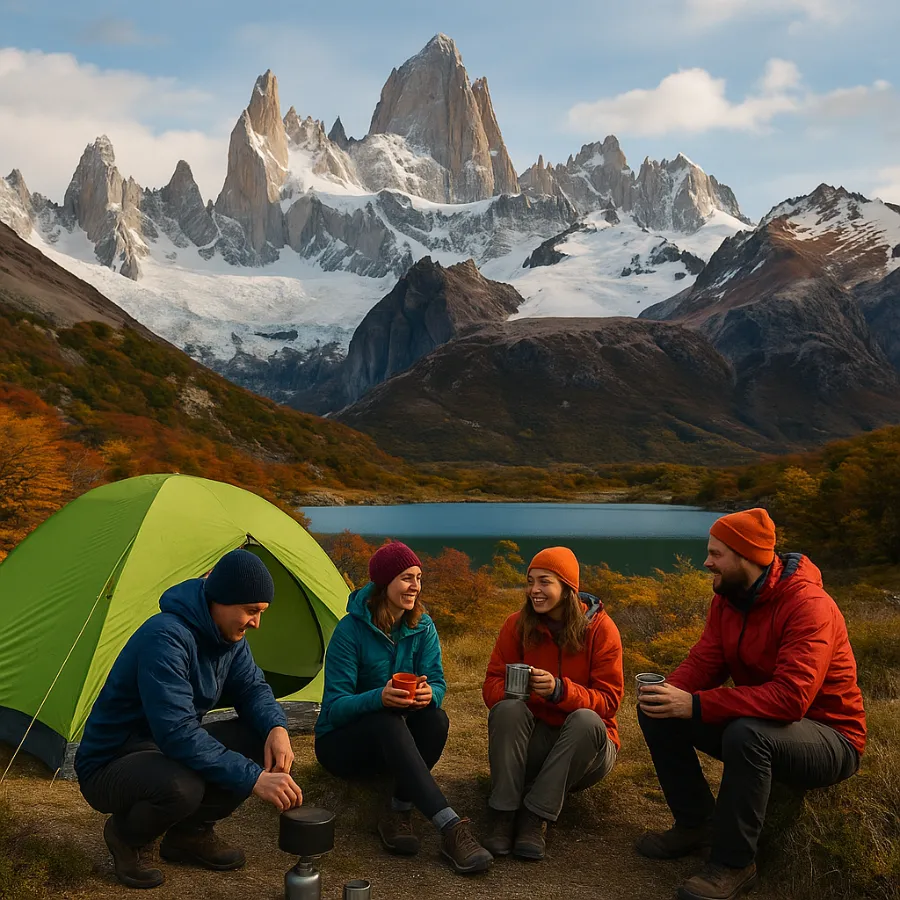
- Accommodation: Options range from rustic campsites to comfortable refugios and even luxury eco-lodges. Book ahead in peak season.
- Transport: Buses connect most towns, though renting a car provides flexibility. Border crossings between Chile and Argentina are straightforward but require extra time.
- Costs: Hiking in Patagonia can be as budget-friendly or as indulgent as you want. Expect to pay $30–$60 per day if camping and cooking, or $150+ if staying in lodges and eating out.
Final Thoughts
Hiking in Patagonia isn’t just about ticking off trails—it’s about embracing the wild, unpredictable spirit of the land. It’s about standing before Fitz Roy at dawn and feeling humbled, or waiting patiently at Laguna Torre as clouds shift to reveal Cerro Torre in all its jagged glory. It’s about battling fierce winds in Torres del Paine, then finding stillness by a glacial lake.
For many, hiking in Patagonia is a once-in-a-lifetime adventure. For others, it’s the kind of place you can’t visit just once. Either way, the trails will leave you changed. Pack your boots, your sense of wonder, and get ready to experience Patagonia—the world’s ultimate hiking frontier.

